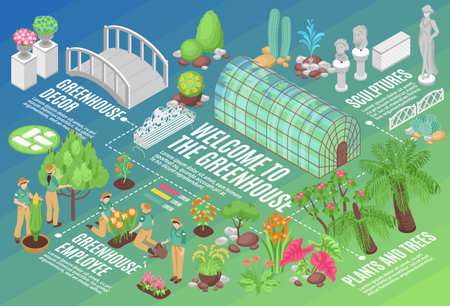Introduction to Wildlife-Friendly British Gardens
Have you ever wandered through a British garden and marvelled at the fluttering butterflies, buzzing bees, or the occasional hedgehog rustling beneath the shrubs? These magical moments are not just delightful for families—theyre vital signs of a healthy ecosystem. In todays world, where urban spaces grow and wild habitats shrink, our gardens have become sanctuaries for native insects and small wildlife. By making thoughtful choices in our outdoor spaces, we can help support local biodiversity right on our doorsteps. Each patch of lawn, flower border, or tucked-away corner has the potential to nurture native species that are struggling elsewhere. When we invite our children to join us in these efforts, we not only teach them about nature but also inspire a sense of stewardship and wonder that will last a lifetime. Lets explore how British gardens play an essential role in sustaining the web of life—one insect hotel and wildlife shelter at a time.
2. Understanding British Garden Habitats
British gardens are a patchwork of diverse habitats, each teeming with life and offering a home to many native species. From the humble hedgerow to wildflower patches, lawns, ponds, and compost heaps, every corner of a garden can be transformed into a haven for local wildlife. Understanding these habitats is the first step in building effective insect hotels and shelters that support thriving ecosystems.
Typical British Garden Habitats
| Habitat Type | Key Features | Common Residents |
|---|---|---|
| Hedgerows | Dense shrubs and small trees along boundaries | Sparrows, beetles, hedgehogs |
| Wildflower Meadows | Mixed native flowers and grasses | Bees, butterflies, ladybirds |
| Lawn Areas | Grass with occasional dandelions and daisies | Earthworms, ants, blackbirds |
| Ponds & Wetlands | Small bodies of water with aquatic plants | Dragonflies, frogs, newts |
| Compost Heaps | Piles of organic matter decomposing naturally | Woodlice, worms, slow worms |
| Deadwood Piles & Log Stacks | Rotting wood left undisturbed in shaded areas | Stag beetles, centipedes, fungi |
The Importance of Native Species and Local Ecosystems
Cultivating native plants and encouraging local wildlife is essential for healthy British gardens. Native insects such as solitary bees, lacewings, and ground beetles play crucial roles as pollinators and natural pest controllers. By supporting a wide variety of creatures—from tiny bugs to birds and small mammals—gardeners can help maintain balanced ecosystems that benefit everyone.
Nurturing Biodiversity at Home
Even simple actions like letting a corner of your garden grow wild or planting native wildflowers can attract an impressive array of species. Children can join in by observing which creatures visit different habitats and learn how each one contributes to the garden’s life cycle. By making small changes together, families help protect Britain’s precious biodiversity while experiencing the joy of nature up close.

3. Insect Hotels: Purpose and Benefits
In the heart of every thriving British garden, insect hotels are becoming cherished features, offering both beauty and biodiversity. But what exactly is an insect hotel? Imagine a miniature lodge, lovingly crafted from natural materials like bamboo canes, pine cones, logs, and bricks with tiny holes—each nook providing shelter for a different garden guest. These inviting structures mimic the hidden crevices insects seek out in the wild but might struggle to find in our increasingly tidy gardens.
Supporting Local Pollinators
One of the greatest gifts insect hotels offer is sanctuary for native pollinators such as solitary bees and hoverflies. In the UK, these hard-working insects play a vital role in pollinating everything from wildflowers to fruit trees. By providing safe spaces for them to nest and overwinter, your garden becomes a nurturing haven—helping to keep pollination cycles strong and healthy throughout the seasons.
Encouraging Natural Predators
Beyond supporting pollinators, insect hotels also welcome beneficial predators like ladybirds and lacewings. These helpful insects feast on common garden pests such as aphids, reducing the need for chemical sprays and encouraging natural balance. It’s a gentle reminder from nature that every creature has its place—even the tiniest ones!
The Importance for Garden Health
By building an insect hotel in your British garden, you’re fostering a richer ecosystem right outside your door. Not only do these shelters encourage greater diversity among garden wildlife, but they also inspire children to observe and learn about the fascinating world of minibeasts up close. Sharing this experience as a family cultivates curiosity, respect for nature, and a sense of stewardship—values that will flourish alongside your blooms year after year.
4. DIY Guide: Building Insect Hotels and Shelters
Building your own insect hotels and wildlife shelters is a delightful way for families to connect with nature and give back to the garden’s tiniest residents. With a few simple tools, some imagination, and locally sourced materials, you can create eco-friendly havens that are both practical and bursting with character. Here’s a step-by-step guide tailored for British gardens—perfect for little hands and curious minds.
Step 1: Gather Your Materials
Using what’s readily available in British gardens or local parks not only keeps costs low but also ensures your shelters are in harmony with the environment. Here’s a handy table of recommended materials:
| Material | Purpose | Where to Find |
|---|---|---|
| Bamboo canes | Nesting tubes for solitary bees | Garden centres, old plant supports |
| Pine cones & dry leaves | Shelter and hiding places for insects | Woodland walks, beneath trees |
| Bricks with holes | Cavities for beetles and spiders | Leftover from building projects |
| Logs & twigs | Tunnels and nooks for woodlice, centipedes, etc. | Pruned branches, fallen wood in the garden |
| Straw & hay | Nesting material for ladybirds, lacewings | Pet shops, farms, or garden sheds |
| Terracotta pots (broken or whole) | Cool retreats for frogs and toads | Recycled from home or neighbours |
Step 2: Choose a Design & Location
Insect Hotels: Stack bricks, logs, and bamboo canes within a wooden frame or repurposed wooden box. Layer materials to create different habitats in each section—like storeys in a miniature bug B&B!
Wildlife Shelters: Use upturned terracotta pots as frog hideouts or pile logs in shady corners to attract hedgehogs. Place your shelters near hedges, shrubs, or ponds for best results.
Top Tip:
South-facing spots are warm and inviting for bees; shaded corners suit amphibians and hedgehogs.
Step 3: Build Together – A Family Project
This is where the magic happens! Let children help arrange materials, count bamboo tubes, or paint the outside of wooden frames with non-toxic paints. Encourage questions—“Who do you think will move in first?”—and share stories about garden visitors.
Step 4: Maintenance & Observation
Your new habitats need very little upkeep. Each season, gently clear out old debris but avoid disturbing overwintering guests. Keep a family nature journal to record which creatures arrive—a lovely way to nurture curiosity year-round.
A Final Thought:
Your homemade wildlife shelters not only support local biodiversity but also inspire lifelong wonder in young gardeners. With every new resident welcomed into your mini wild haven, you’re helping weave a richer tapestry of life right outside your door.
5. Caring for Your Wildlife Shelter
Once your insect hotel or wildlife shelter is in place, the journey of nurturing local biodiversity truly begins. The careful siting, regular maintenance, and active monitoring of your new habitat are all part of ensuring its long-term success — and can become a cherished family or community activity.
Choosing the Perfect Spot
Select a quiet corner of your garden, away from frequent foot traffic and harsh weather. Ideally, site your shelter facing south or southeast to catch the morning sun but shield it from prevailing winds. Tuck it amongst native plants or shrubs to offer extra protection and food sources for visitors.
Maintaining Your Habitat
Regularly check your shelter for signs of damage or dampness, especially after a wet British winter. Remove any mouldy materials and replace them with fresh, dry twigs, straw, or bamboo. Avoid using chemicals or pressure washers nearby — let nature take its course and keep things as wild as possible!
Monitoring and Family Wildlife Spotting
Make it a family tradition to observe who’s moved in each season. Keep a simple logbook: note sightings of ladybirds, bees, hedgehogs, or even the occasional toad. This not only sparks curiosity but also helps you track which features are most popular with your garden guests. Why not join a local wildlife group or participate in national surveys like the Big Garden Birdwatch? Sharing discoveries can turn caring for your wildlife shelter into a meaningful community adventure.
With patience, gentle care, and a spirit of togetherness, your British garden will soon be buzzing with life — offering endless opportunities for learning, connection, and delight.
6. Inspiring Young Gardeners: Plant and Wildlife Connection
Encouraging our children to engage with the garden is more than just a weekend activity – it’s planting seeds of curiosity, respect, and wonder for the natural world right at home. In British gardens, building insect hotels and wildlife shelters offers a hands-on way for young gardeners to witness the magic of nature up close, learning how every creature and plant plays a part in the local ecosystem.
The Joy of Discovery
There’s something truly special about watching a child marvel as bees nestle into a bug hotel or hedgehogs scurry into their newly built shelter. These moments spark questions: Why do insects need homes? How do plants help them survive? By encouraging this curiosity, we foster a deeper appreciation for even the tiniest garden visitors.
Learning Through Doing
Involving children in constructing wildlife shelters teaches practical skills and environmental stewardship. They’ll learn which native British plants attract pollinators or provide food and shelter for birds and bugs. Simple tasks like gathering twigs, stacking bamboo, or planting wildflowers become opportunities for meaningful learning – all while getting hands deliciously muddy!
Pride in Protecting Local Nature
As young gardeners see butterflies fluttering around their wildflower patch or ladybirds tucked inside an insect hotel they helped create, they develop a sense of pride and ownership in caring for their patch of the planet. This connection helps nurture future generations who will value and protect Britain’s green spaces and diverse wildlife.
By weaving together play, observation, and gentle guidance, we can inspire children to become lifelong friends of nature – starting right in our own back gardens.


